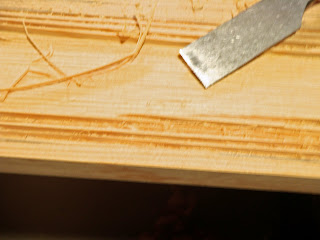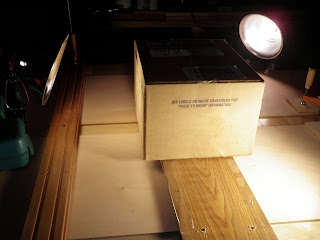The changing economic scene may drastically alter the way we buy new boats in the future. Many senior executives at boat manufactures I've spoken with recently have hinted that the days of dealers having boats in stock ready for delivery, may be coming to an end. Instead, we'll go to a boat show, see a model, and then place an order. If you want a 23 and all they have built is a 25, then you'll be told " its the same as the 25 except a little smaller." Waiting 2-3 months for a boat will become the norm.
Its not just that consumers arent spending, but commercial banks are changing the way they loan money to boat dealers ( and RV, lawn equipment, piano, and other high end products). In the past, a dealer would get financing from a company likey GE Capital
http://gecommercialfinance.gecapsol.com/cms/servlet/cmsview/ComFin_Corp/prod/en/main/index.htmlthat would allow them to purchase boats interest free for about 6 months. After that, they would have to start paying nominal interest, say 1-percent a month. After a year, the boat would have to be paid off in full. This worked for dealers because it enabled them to stock boats with little cash outlay. Once they sold a boat, they would pay it off. Remember that it can take 4 months or longer to sell a boat. So with the free interest, the dealers ability to discount the boat to the consumer looking to haggle was possible.
But now, the floor planning banks require 5-percent of the loan after 6-months, followed by another 2 percent every month til the end of the term. At todays boat prices, a 20-footer costs $30K, its not hard for even a small dealer with light inventory to still have millions of dollars in inventory . With just a mil in inventory, a small amount, that guy has to come up with $50, ooo after 6-months and $20K every month following. Its crushing, it takes the ability to discount the boat away as profit is eaten by interest. So what are dealers doing? They arent ordering boats from the factories for stock.
Now the model of ordering a boat and waiting months for it is already established, in the high end boats and in larger boats targeted at wealthier customers. Knowing they have a sale, an ordered boat can be discounted somewhat and the dealer is happy to make and service the sale becuase he's making profit. But for "Joe Sixpack" this means buying something sight-unseen, and probably at a higher cost, because the boat will no longer be produced in high volume. For the dealers who service and sell smaller boats, the diminished profit potential, and the loss of "impulse" sales, means its not worth being in business--they will do something else ( I would). Many who choose to stay may die trying. The landscape is going to change dramatically.

























